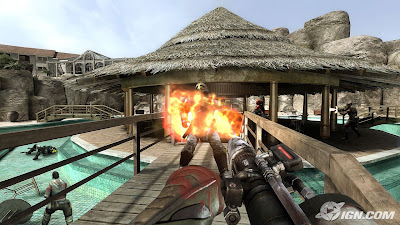I wouldn't like this blog to become an obituary, not least because its title would assume a terrible irony.
I'm sad to say that my ex's mother passed away at the weekend, and I would like to share some thoughts and memories to show my respect.
My ex and I remain good friends, and her mother and I were, in many ways, kindred spirits. She had a soft spot for me, and I for her.
I was studying at Leeds Uni when she came to Leeds to stay in a hotel - this is going back some fifteen years and was perhaps the first time I chatted with her; she was very fond of staying in hotels, and of hotels in and of themselves. I think she found a freedom and she enjoyed the opportunity to meet and chat with new people. She showed me her room and dragged me across to the window. She was eager to see what I made of her view. It was dark, and the view was little more than rooftops and fire escapes. But there was a shady excitement, as though it were a window through to some clandestine city nightlife where crimes were committed and covert meetings were fulfilled. And the moon shone brilliantly about those darkened windows and alleyways. She was so pleased that I shared her appreciation of her view; she said that she knew I'd understand. She said that the moonlight susurrated. I was unfamiliar with that word, and she explained that it referred to a soft sound, much like waves lapping at a beach. I think she knew the word from a poem.
Ten years ago, I think it was the night before Christmas Eve, I went round to her house after having been drinking with her son, my friend. Everyone was in good spirits, and I remember that all was right in the world. Her small ground floor bedroom, which served as her lounge and her dining room too, was always cosily and dimly lit and warm. I stayed up with her as her son went to bed. She showed me her collection of cigarette lighters - every one had to be a different colour to all the others. On her walls, nailed into the yellowing and peeling wallpaper, were portraits of her beloved composers. Chopin was her favourite. In between the portraits and all along the mantelpiece, she kept postcards from her four children and her friends, and old photos, one of her father who, she later told me, took her to Germany at the height of the war.
She told me that she had long-since wanted to be a professional writer. She left the room and I sipped my coffee and smoked, and she returned with two cardboard boxes. The boxes were filled with poems and short stories, all typed on a typewriter. She sat in her chair next to the upright piano (which she could play magnificently) and explained that she had never shown these to anyone before and asked if I'd like to read one. I recall vividly the feeling of trust and honour she had gifted me with. She sorted through the first box and retrieved three or four pages and handed them to me and lit her cigarette. I read her story, of a love affair, of a young soldier and his girlfriend sitting at a table outside a café, and they drank coffee and they were saying their farewells before he would leave to go to battle. It was moving and I imagined that she had been the young girl.
About three years ago, I completed my first novel-length manuscript: a fantasy titled Tethered Light; the manuscript that I am now reworking. I took her round a box containing all 150 or so pages. It took her a month to read it through. Then she texted me to tell me, of course, how mad a publisher would have to be if they didn't shower me with adulation and money :o)
And she remains the only person to have read the whole thing.
She died of septicemia which is blood poisoning. It was very sudden. Her children were informed that she had been taken to hospital. They arrived at the hospital and spent the night with her and she was gone by morning.
Now they are dealing with all the practicalities and arrangements that go with death. And I wonder what they will think when they find those two cardboard boxes filled with her secrets and thoughts and desires and dreams. I wonder if they will discover a person they never knew. I wonder how they will feel reading her words and if their perceptions of their mother will change. I wonder how deeply her words will touch them and for how long they will susurrate.
She was a faithful and Godly woman and I'm sad that I never got to say goodbye or share another sherry and cigarette with her or chat with her about writing and Blake and Chopin or have her chastise me for not knowing a particular word.
She lived well and followed her heart.
Now may she find peace at God's side.
x
Missed Learning Opportunities
21 hours ago




















